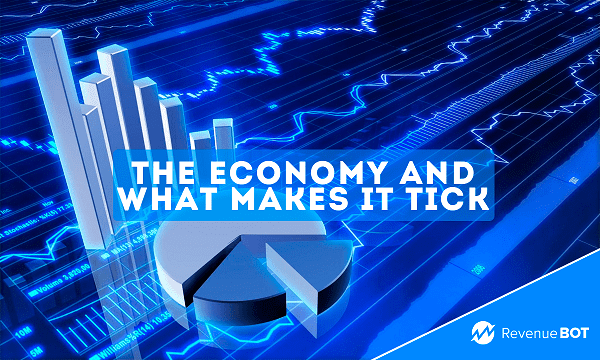
For many of us, economics, as if an intangible thread weaving together all areas of our lives, remains obscure. That’s why in this article we will delve into the realm of economic workings and try to solve this complex yet fascinating system.

Factors affecting the economy
The economy itself is something that is ever-changing and evolving. But to be more precise, it is a vast network of individuals, organizations and governments, each actively involved in the creation, circulation and use of goods and services. There is a wide spectrum of elements that influence the economy – macroeconomic aspects such as government policies, interest rates and international trade, as well as microeconomic ones – individual spending and saving decisions.
Government policies
Government policy is the key element guiding economic growth. Depending on the decisions made by the government, the taxation, budget, and investment climate are affected, thus shaping the overall economic route.
Speaking of interest rates, budgetary expenditures and market regulation, these are the tools the government employs to influence the economy. If applied wisely, they can stimulate growth or mitigate economic turmoil.
It is the state’s responsibility to create favourable conditions for equal competition and to protect the needs of consumers, while regulating the market is aimed at preventing monopolies and ensuring fairness in the business environment.
International trade
This one plays a vital role in shaping global economic ties. The exchange of commodities and services between countries fosters mutually beneficial relationships and encourages economic growth.

Building trade agreements and partnerships between nations is gaining a strong foothold in the global economy. They set the flow of play, helping to reduce tariffs and break down trade barriers.
Globalization opens up new horizons for business either. But the devil is in the detail. Currency fluctuations, rate wars and uneven trading conditions demand careful analysis and effective management so as to balance the opportunities and risks associated with international trade.
Businesses
Business, being the powerhouse of each and every economic progress, is built on entrepreneurship and innovation. Entrepreneurs generate new ideas, business models and technologies, thus fueling continuous development.
SMEs (small and medium businesses) are the lifeblood of the economy, both contributing to employment opportunities and encouraging rivalry. Their agility and versatility play an essential role in the economic structure.
Today’s businesses face a mounting need for taking responsibility for society and the environment. Sustainable development and public accountability are turning out to be major factors for the long-term success of enterprises.
Economic indicators
To assess the state of any economy, various economic indicators are implemented. They provide data on the level of economic activity and can be of use to individuals and policymakers.

Gross domestic product (GDP)
GDP is a pivotal economic indicator that gauges the value of all goods and services produced within a given country over a certain period of time. Not only does this indicator capture the volume of economic activity, but also serves as a benchmark for evaluating the overall well-being and development of a country.
The components of GDP are as follows:
- Consumption – household expenditure on goods and services.
- Investments – business investment in new capital assets.
- Government expenditure – government spending on goods and services.
- Net exports – the difference between exports and imports of goods and services.
And here’s why such an indicator as GDP is important:
- Economic performance indicator: higher GDP growth signals a booming economy, increased production and income.
- Comparative analysis: GDP allows us to compare the economic activity of different countries and assess their relative position in the world economy.
- Living standard assessment: GDP per capita provides an indication of the average income and welfare of citizens.
All these aspects make GDP an integral part of economic analysis and policy formulation.
Inflation rate
The percent change in the prices of consumer goods and services over a certain period of time is called the inflation rate. As for this economic indicator, it is of great importance when it comes to estimating the soundness of the price environment and the impact on the purchasing power of the population.
Consumer Price Index (CPI)
Speaking of CPI, we can say that it is a tool for monitoring price level changes for consumer goods and services, which enables us to analyze the effect of inflation on household budgets.
Consumer Price Index is based on a so-called ‘market basket’ representing typical consumer spending. It measures the percentage change in the value of that basket across a particular timeframe.
Conclusion
The economy, being a fast-paced environment, bears a diversity of dependencies. Here we have addressed important aspects of economic activity, ranging from the role of entrepreneurship, moving on to global linkages between countries, and culminating in an analysis of key economic indicators. While being sophisticated, every economy must be open to adjustments.
